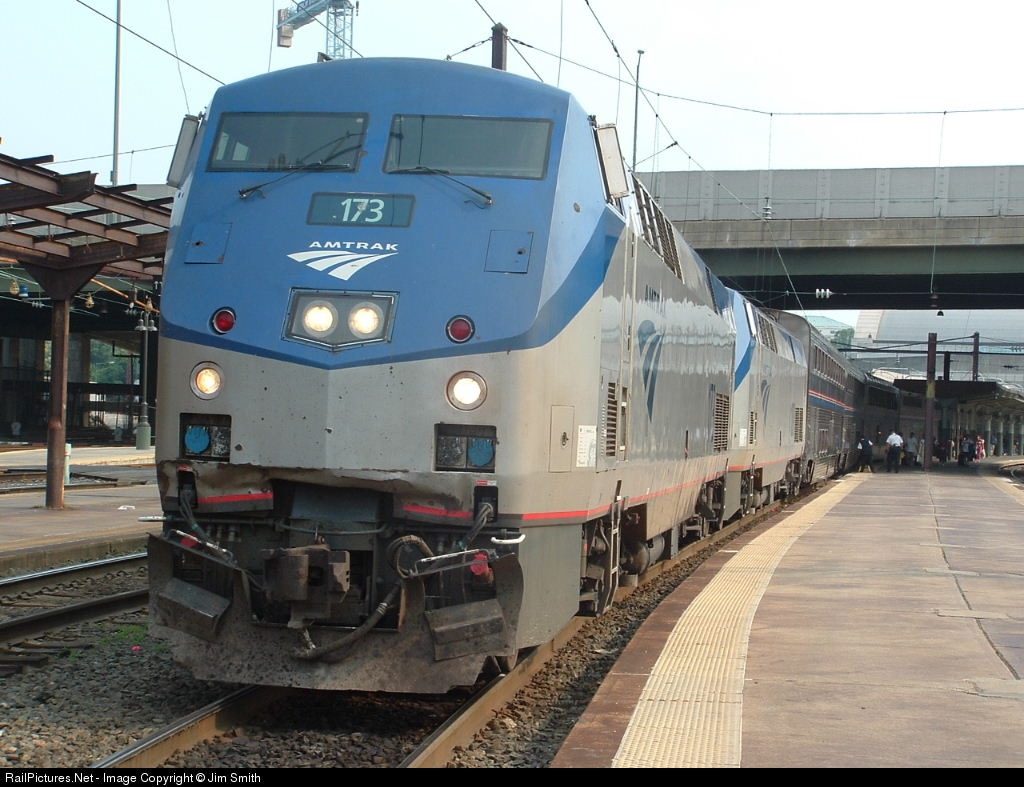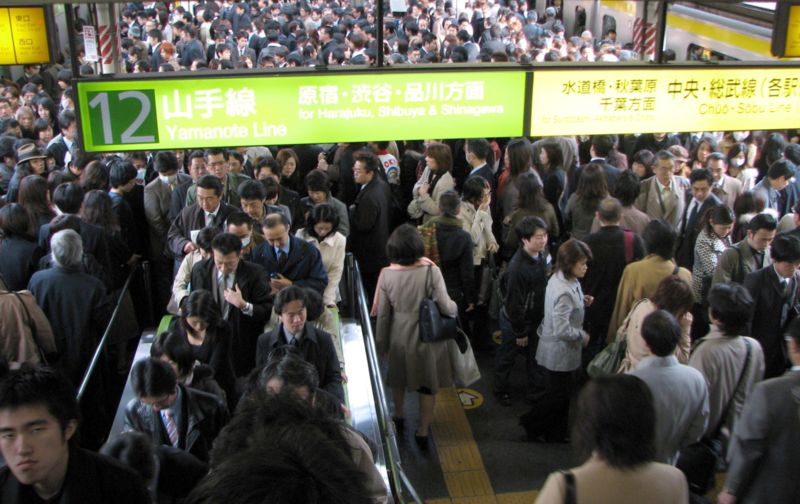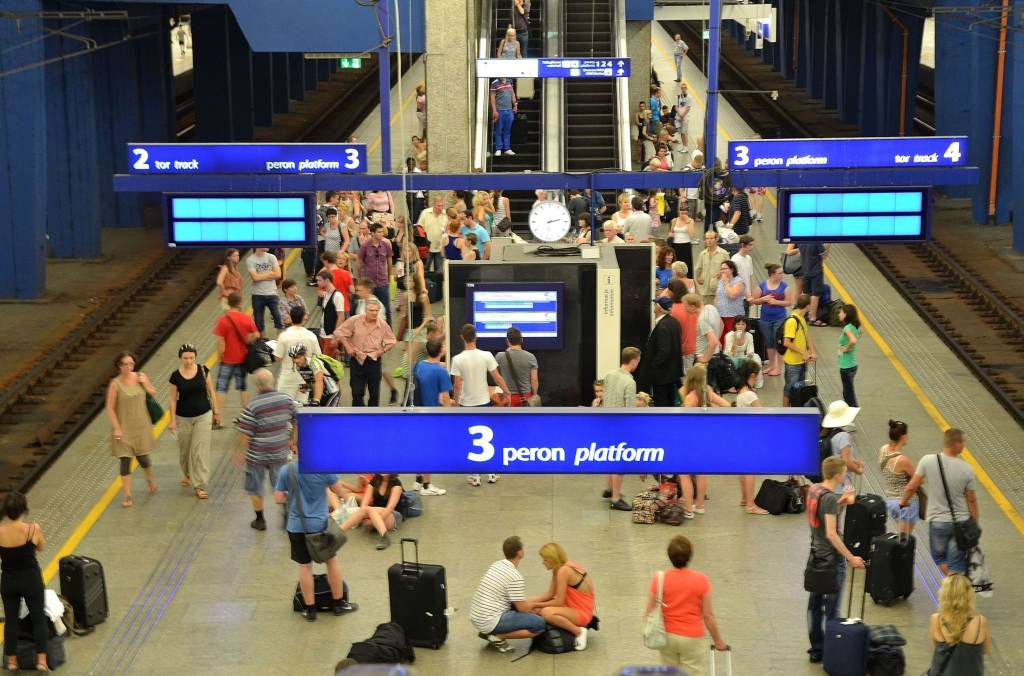Reminds me that when I was a kid in NY in the '70s...
Sometimes it seems like the 1970's were the last decade when US citizens were still allowed (and expected) to determine their own fate. You saw it in the big city and I saw it in a remote town where I was free to roam the switching yards and climb all over the hardware until it was time to go home. If I hurt myself I kept it to myself because I knew I'd be the one blamed for it, not the railroad. When the 1980's rolled around we started marching down the long road to Nancy's nanny state. Instead of protecting us from the actions of others our society chose to spend most of its time and effort trying to protect us from ourselves. Which is just about the last thing I'd expect a pro-freedom society to be worrying about.
NYP gets a little tricky... I'm not exactly sure what the best solution would be. It's a pretty busy place.
How about calmly checking tickets before it's time to board? How about calmly checking tickets on the train after boarding? NYP is a station where you're expected to stand around waiting for the carefully managed signage to update and then
RUSH! RUSH! RUSH! with the rest of the clumsy mob at the last possible moment to your train. Only to be held up by indifferent gatekeepers as you approach some arbitrary choke point that slows the mob's mad dash into mad crawl. As you descend further and further down a packed escalator your stress level rises higher and higher. Meanwhile folks in the know are using redcaps or sneaking around the lower levels of the basement and onto their trains. Is this really the best solution anyone could come up with?
LAUS is comical today as Metrolink pax walk past Amtrak pax lined up behind the old Gate E & F (which are scheduled to be removed). to do their kindergarten walk. I see absolutely no reasaon for this at LA. Their platforms are plenty wide and well marked for the appropriate train. Nobody knows what Amtrak will do with the coach pax when they take their "gate" away.
The sooner Amtrak lets go of the kindergarten nonsense the better it will be for
almost everyone. If you're too young to know any better than to get hit by a train then your parent or guardian should be busy watching you, not Amtrak. If you're too old or clumsy or frail to avoid getting hit then maybe it's just your time to go. Amtrak shouldn't be in the "protecting you from yourself" business. If the courts need a new law to extricate Amtrak from that responsibility then so be it.
Most people think there's a happy medium between "protecting you from yourself" and "maybe its just your time to go." Also, most people don't invest with all sorts of portentious socio-political meaning the fact that "we" don't leave everyone to fend for themselves.
After all, all stations (transit, commuter, or intercity) have signs, and many have information booths, attendants, etc. They've had them as long as there have been train stations, for a lot longer than since the 1970s. Most people don't think it would build moral fiber or reduce dependency to take away all such guidance and leave it 100% to every passenger to find his/her way to the right train. Is adding one more path-finding procedure a good idea? Maybe, maybe not. It's debatable. What it isn't is some conscious effort to wrap everyone in bubble wrap or to insult every person's intelligence.
Regardless of whether its a legal issue -- I doubt it is, or there wouldn't
be stations without a "kindergarten walk" -- is it possible, just possible, that Amtrak, as operator of the trains and employer of their on-board and station crews, has decided that the balance of the inconveniences in both directions ("kindergarten walk" has costs, and so does "every man for himself") works out to providing some level of guidance greater than commuter or subway passengers?
I live in Chicago and commute by Metra. As people are fond of pointing out, Metra doesn't have the kindergarten walk at CUS, Amtrak does. However, Metra and Amtrak aren't the same. There's a difference between trains that run every hour or two and ones that run once a day, or even three times a week. And there's definitely a difference between commuters who take the same train daily, or even suburbanites who go downtown once a week, and people who travel infrequently who are taking the trip of a year or even a lifetime.
You may not be that person, and you may resent the inferred insult to your intelligence. But no system is designed for the high-information frequent user. 90% of the people going through a subway station on a given day don't even need the signage. They go through that station twice a day or more, and could find their platform in their sleep. Newsflash! That signage ain't there for them, and it isn't some sort of insult to the experienced riders nor a waste of money that it's there.
It's easy to say "check tickets on the train after boarding". (Oddly enough, Metra, or at least UP at Ogilvie, checks tickets at the mouth of the platform on busy outbound Saturday night trains.) But if someone riding a train for the first time in ten years gets on the wrong train that goes three days a week, it's a different matter.
And yes, Amtrak could tell him "tough toenails, you boarded the wrong train." But the crew, station personnel, etc. have to deal with the upset passenger rather than doing their various other duties. The "abandoned" passenger says "never again" and tells his friends -- or blog readers -- the same; whether that's "right" or fair is irrelevant. Its possible that through
experience Amtrak (or even its predecessors: were there "kindergarten walks" at pre-Amtrak CUS?) reached a conclusion that an ounce of prevention in the form of the "kindergarten walk" outweighs those costs of letting infrequent travelers fend for themselves reaching infrequent trains.


























































